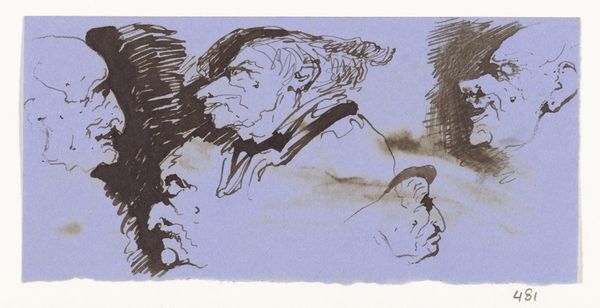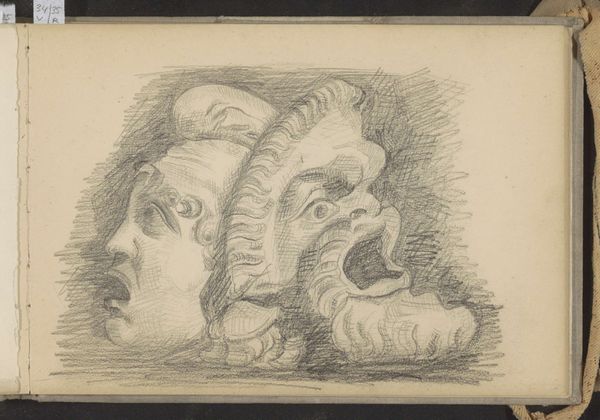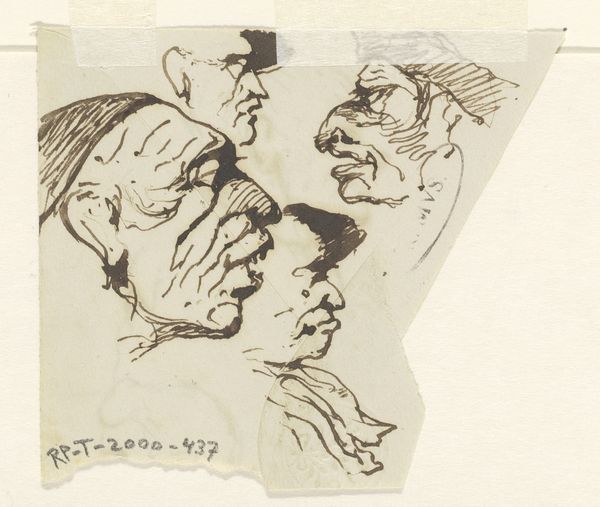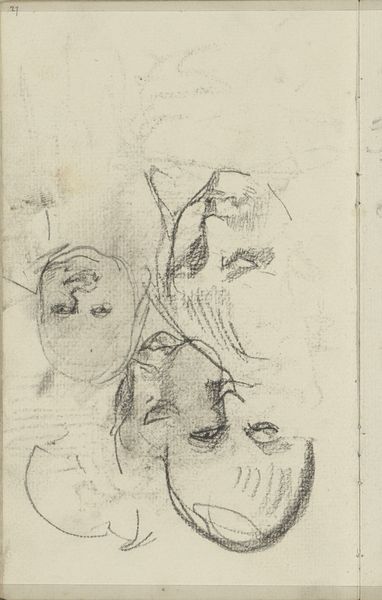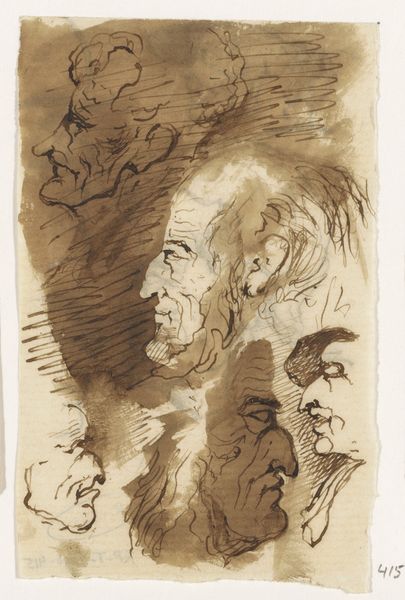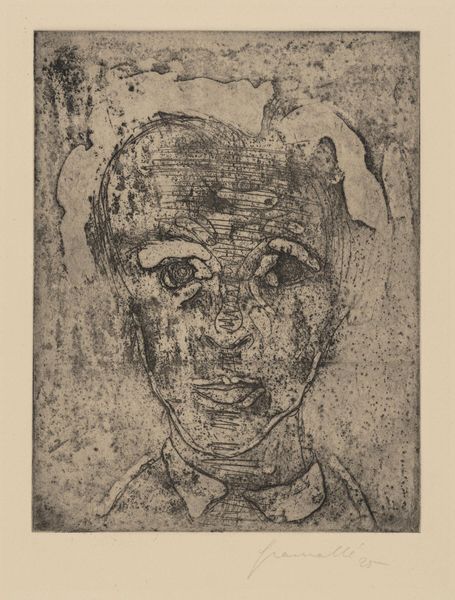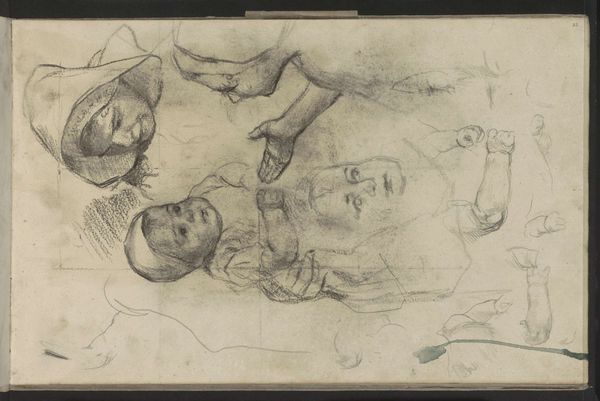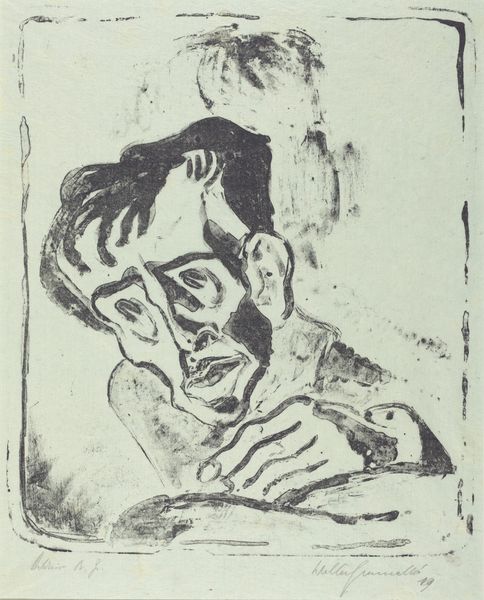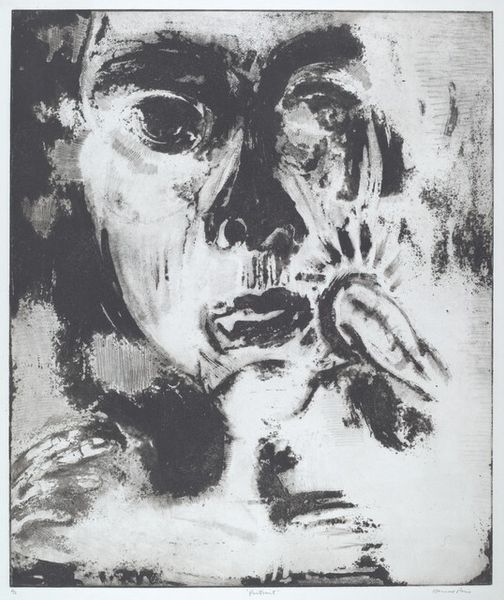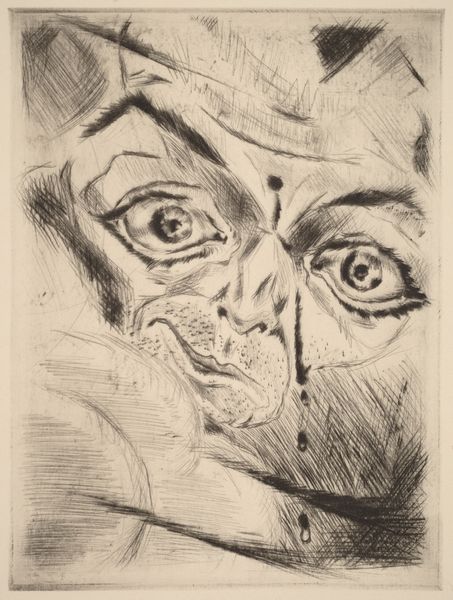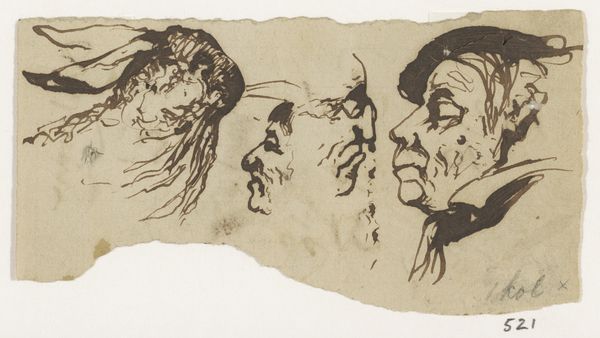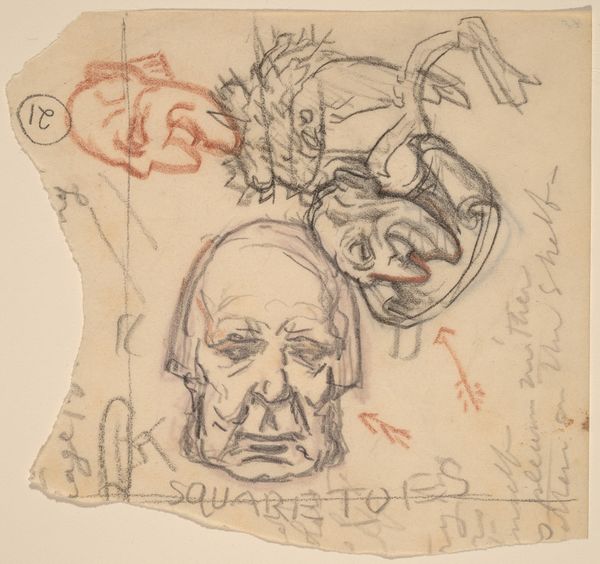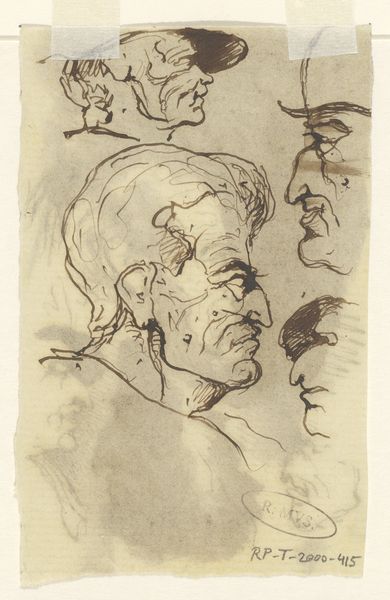
aquatint, drawing, print, etching
#
portrait
#
aquatint
#
drawing
# print
#
etching
#
figuration
Dimensions: 130 mm (height) x 163 mm (width) (plademaal)
Curator: Here we have Oluf Hartmann’s “Studieblad,” dating from 1906, currently held at the SMK, or Statens Museum for Kunst. Hartmann was exploring etching and aquatint here. Editor: There's a raw, almost unsettling quality to this print. The clustered figures and that central face – it feels intensely psychological, even a bit disturbing. The aquatint really gives a grainy texture. Curator: Indeed. The composition, with its central portrait looming over smaller, active figures, suggests a hierarchy of observation. Was Hartmann commenting on the power dynamics inherent in artistic study and the artist-model relationship? It resonates with the societal concerns present at the time about exploitation and representation. Editor: I agree. And beyond those potential societal commentaries, let’s consider the expressive distortions. Look at how Hartmann renders the main face; the stark contrast creates such an unsettling depth. It suggests a subjective emotional landscape more than an objective likeness. The aquatint haziness almost feels like an aura. Curator: Considering the period, this artistic approach aligned with broader expressionist tendencies— where emotional states held greater value than pure mimicry of visual reality. Perhaps Hartmann employed etching as it captures this nervous, unpolished visual language very well? It definitely suits his emotive, somewhat agitated disposition. Editor: I like the contrast between the detail in the portraits, the stark lines giving the side profile so much definition compared to the free, gestural forms of the figures. Curator: Precisely. Hartmann's "Studieblad" acts as a powerful lens into the socio-cultural landscape of his time. It compels us to contemplate representation's role in negotiating relationships and artistic power. Editor: And on another level, Hartmann pushes etching’s formal capabilities—its tonality, the suggestive open space, all creating tension, really expanding printmaking’s emotive potential.
Comments
No comments
Be the first to comment and join the conversation on the ultimate creative platform.
